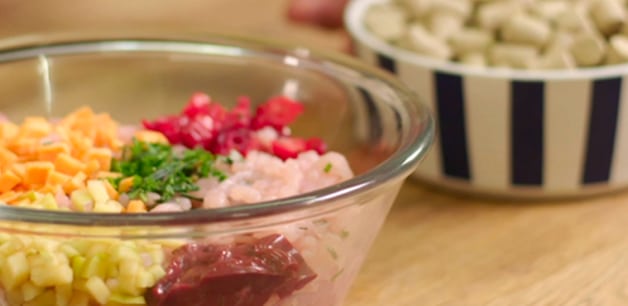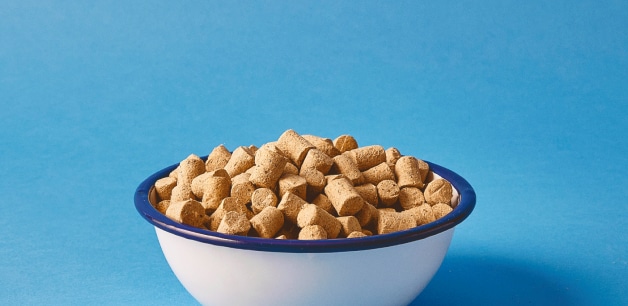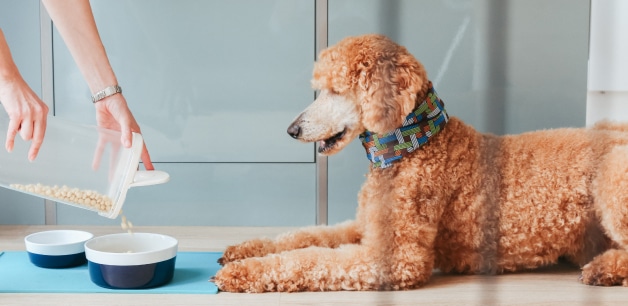How Long Does Dog Food Last?
Choosing the right storage for your dog’s food can be a challenge. Many pet owners, like me, have learned the hard way about the importance of proper dog food storage.
With various dog food types available—frozen raw, freeze-dried, dry, tinned, and homemade—it’s crucial to store each type correctly to maintain freshness and safety.
While researching pet food storage may not sound exciting, it can make a significant difference in your dog’s health. Many pet parents often overlook this aspect. Proper dog food storage ensures your dog’s food stays delicious and fresh, keeping your furry friend healthy and happy.
Raw Dog Food Storage
Raw dog food, commonly available in frozen and freeze-dried forms, has specific storage requirements.
When feeding your dog frozen raw food, preventing harmful bacteria growth is essential, whether you buy complete food or make it from scratch. Store raw pet food in the freezer immediately upon bringing it home, even if it means clearing some freezer space.
Before serving frozen raw food to your dog, ensure it’s completely thawed. Thaw it in the fridge using a seal-lock storage bag. If you plan to travel with your dog, make sure your accommodation can store the frozen food correctly.

Benefits of Freeze-Dried Raw Dog Food
Freeze-dried raw dog food offers a convenient alternative to frozen raw food. It retains all the nutritional goodness without the need for freezing or refrigeration, making it a top choice for me and my pack of six.
This lightweight option is perfect for traveling and suits fussy eaters or those new to a raw diet. The nugget-shaped freeze-dried food provides complete and balanced nutrition for your dog.
Despite being raw, freeze-dried food benefits from an impressive shelf life, lasting for years unopened. This is possible as the unique freeze-drying method removes 98% of the moisture in the food, naturally preserving the ingredients without any heat used whatsoever.
To preserve the flavour and to prevent staleness, store your open bag of freeze-dried raw food in its original zip-lock bag or an airtight container. Always remember to disinfect the utensils and surfaces, and wash your hands before and after handling raw dog food.
Also, always check the best before date on the bag, as it may vary by brand.

Dry and Tinned Dog Food Storage Tips
Dry dog food, such as kibble or cold-pressed varieties, don’t require refrigeration and can be stored at room temperature. Make sure to keep the dry dog food bag in a cool, dry, and dark place. Excessive moisture can lead to mould, and exposure to air can make the oils within the food go rancid. Improper storage can affect its flavour and potentially upset your dog’s stomach.
As for tinned dog food, it’s a good idea to use it shortly after opening to prevent it spoiling. Once opened, refrigerate the food and use it within a few days. You can cover it with plastic lids or re-usable tin covers to keep it fresh and contain odours while in the fridge.
Home-Cooked Dog Food Storage
Some dogs love homemade meals, packed with nutrients! Just remember to store it right. If you cook in batches, refrigerate it for up to three days in plastic bags or containers.
Also, make sure the cooked food cools completely before refrigeration. This is because lingering heat can be a breeding ground for bacteria.
You might find it convenient to meal-prep your dog’s food and freeze it in labeled containers or freezer bags.
A handy way of ensuring your dog is benefitting from a complete and balanced, natural diet is by signing up to a monthly subscription service tailored to your dog. This saves you time on meal preparation, making mealtimes seamless for you too!

Keep it fresh and tasty!
If you’ve recently been stuck wondering ‘how long does dog food last’? Then I hope this blog has been helpful for you!
No matter the type of dog food you choose, always store it in a cool place away from direct sunlight, unless it requires refrigeration. Additionally, aways check the expiry date, even if it looks and smells fine.
Proper dog food storage keeps it safe and delicious, reduces waste, and keeps your dog happy!
Until next time,
James & Ella

